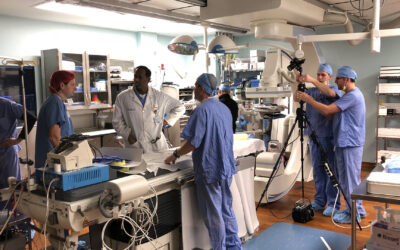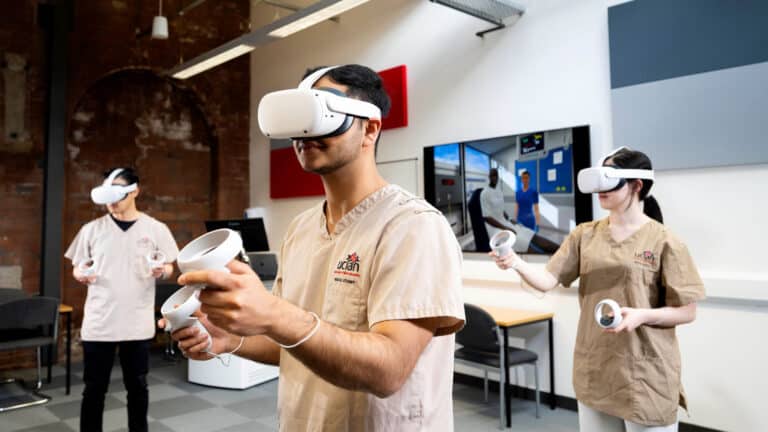Students at the University of Central Lancashire’s School of Medicine are using immersive technology as part of their learning.
UCLan is employing technology developed by Oxford Medical Simulation to practice treating acutely unwell patients in a simulated, virtual environment, without risking patients’ lives.
“Traditionally small numbers of students practise with plastic mannequins in mocked-up hospital wards. Now, with our new immersive simulated environment, it means up to 100 students could be training on multiple simulations simultaneously and as often as they like,” explained UCLan’s Dr Abhi Jones, Clinical Lead for Interprofessional Education.
“It’s important for us to remain at the forefront of innovative learning opportunities available to students. With an emphasis on honing effective decision making, critical thinking and clinical reasoning, this exciting new development will complement and reinforce our traditional teaching methods.”
The University funded the investment, following a successful bid to Health Education England (HEE). The £315k has been spent on Oculus Quest virtual reality headsets, as well as licensing the software.
“OMS exists to help bridge the gap between healthcare education and practice. We wanted to allow learners to practise as often as they like in virtual scenarios, to learn from their mistakes, and ultimately provide the best possible care to their patients,” said Dr Jack Pottle, Chief Medical Officer, Oxford Medical Simulation NHS Innovation Fellow.
“In working with the wonderful team at UCLan we are able to realise that vision. Their proactive and forward-thinking approach is a perfect example of how to implement virtual reality in medical education – we look forward to what the future brings!”
The software gives students access to a clinical simulation library, with learning scenarios such as sepsis, diabetes, heart attack and pancreatitis.
On entering the virtual scenario, they’re greeted by a nursing assistant and their patient, who they can then question, examine, comfort and treat.
Every action the learner takes, including diagnosis, is recorded, pinpointing areas for improvement and personalised feedback.











